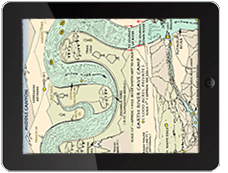ABOUT EARTH RIVER
Diego Castro
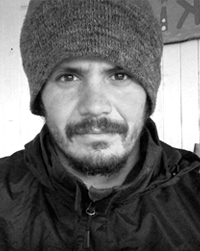
Guide
Diego is from Argentina and has been guiding expeditions around the world for 15 years. He has guided 12 season on the Zambezi in Africa and 8 seasons on the Futaleufu. He is fluent in English, Spanish and Italian and has guided in Norway, Italy, Chile, Africa, Argentina, Canada and the U.S. . Diego has been guiding on the Futaleufu for 8 years and has worked as a safety kayaker, a video boater. He has managed a rafting company in Argentina for many years. He is a top level whitewater kayaker. When he’s not guiding around the world, he resides in Futaleufu.
Tyler Pohl
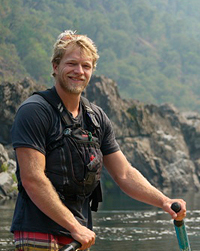
Guide/Trip Leader
Tyler grew up in Wisconsin but now calls the Pacific Northwest home. He has been guiding for 14 years on the following rivers; the Gauley in West Virginia, the Colorado through the Grand Canyon, the Salmon in Idaho, the Magpie in Quebec and dozens of rivers in California and Oregon, Costa Rica, Guatemala, Colombia. His favorite river is the Futaleufu where he has been guiding and trip leading for Earth River for 5 seasons. Tyler is a certified Wilderness Emergency medical Technician (E.M.T.) When not guiding for Earth River he manages a rafting company in the Pacific Northwest. An avid kayaker, Tyler can often be found exploring creeks and rivers throughout California, Oregon and Chile.
Juan Acero
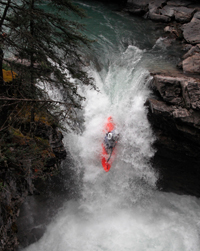
Guide/Trip leader
Juan is from Columbia and resides in British Columbia. He has been guiding for 23 years and had guided in; Colombia, Costa Rica, Peru, Ecuador, Bolivia, Italy, Canada, U.S. and Chile. He has guided the Futaleufu with Earth River for 8 seasons. When not guiding, Juan is a volunteer fire fighter in Vancouver and coordinates safety for movie productions. He also managed a rafting company in Columbia for 4 seasons. Beside rafting, Juan has extensive guiding experience in caving, rappelling, climbing and mountain biking.
Teal Hertz
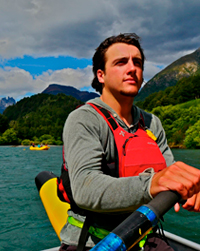 Guide
Guide
Photographer
Teal has grown up in the outfitting industry having done expeditions throughout the U.S. and internationally in Fiji, Costa Rica, Belize, Patagonia, Yukon Territory, British Columbia and Quebec. In the U.S. he has worked on Oregon's Rogue River and California's Kern and Tuolumne. Internationally he has guided for Earth River for 8 years on Quebec’s Magpie and on the Futaleufu for seven seasons. Teal is a professional photographer and his work can be found on the Earth River web site and on his Instagram site: https://www.instagram.com/toasted_teal/?hl=en
Video Brochure
REFLECTIONS
The following piece was excerpted from The winter edition of the Syracuse University Magazine
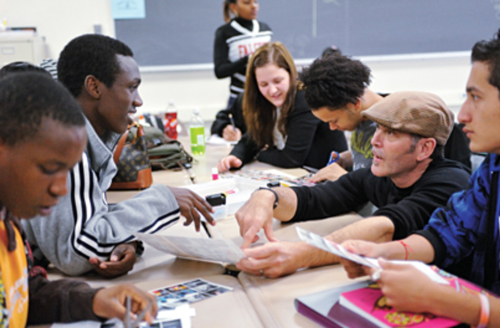
Stephen Mahan (right), director of Syracuse University’s Photography and Literacy Project.
Giving voice to city school Children Helping students discover that voice through writing and imagery is Stephen Mahan’s mission. With digital cameras, journals, and a fierce sense of commitment to the students, he helps them learn storytelling techniques and media skills that trigger self-expression, building self-esteem as they explore their outside worlds and inner selves.
Mahan recognizes these students, he says, because he sees himself in them. He was hyperactive, constantly in trouble, and had difficulty paying attention and reading. Eventually, a passion for photography led him to an M.F.A. degree from the University at Buffalo, where he taught photography in a program for inner-city kids. The combination clicked. “I know a lot of these kids have the same difficulties I did,” he says. “If I can make one kid or any number of them feel they’re capable, intelligent, creative and have something substantial to add to the conversation in class, then it’s worth it.”
At Fowler High School in Syracuse, which has a 65% drop our rate, the highest in New York state, that challenge is regularly put to the test. The majority of students come from the city’s poorest neighborhoods. Like many urban schools, the school is underfunded, overcrowded and faces scrutiny for standardized testing performances. 40% of the students are African American and 25% hispanic. There are also children from Bhutan, Nepal, Sudan, Liberia, Vietnam, Iran and elsewhere. At last count, 21 languages were spoken in Fowler’s halls. In this tremendous clash of cultures, Mahan’s program gives students the ability to not only be comfortable sharing their deepest thoughts, but to appreciate others as well.
In the six years Mahan has been doing this, he has encountered his share of stark, honest writing that reflects the all-too-real lives of the students. One wrote about his father’s suicide, others about domestic abuse, street violence, teenage parenting, and homelessness. Most of these kids do not have an outlet for their emotions which causes turmoil. When given the opportunity, they have the ability to dazzle readers and viewers with their rawness and uncommon maturity.
Mahan measures the program’s success in helping the students realize the value of their words and imagery—that they have something to say. It is a way for them to discover they are important. “When the pictures are all laid out on the table, it is impossible to tell which kid has difficulties,” Mahan says, “and that’s what motivates me.”
Shaohong Personal Reflections
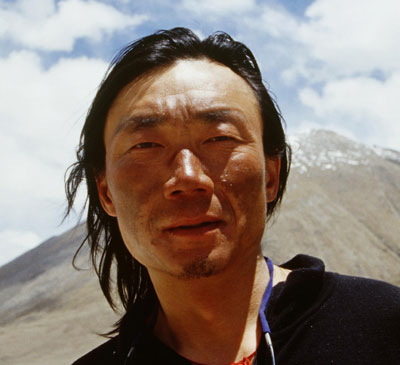
It was my first climb on Everest. As I left the last camp at 26,000 feet, to climb to the summit, I remembered the words of my climbing colleagues, “you will come across the dead bodies of many climbers on the way to the summit, it`s really frightening.” That part of the Everest experience isn’t talked much about outside the climbing circles.
Even though I was prepared, it was still a shock to come face to face with this frozen graveyard. If their faces had not been covered in snow, I would have thought they were sitting down taking a rest before climbing onwards. There was not much time to think. I had to reach the summit to complete my work, the first official measurement of Mount Everest in over three decades. As I pushed on, I passed more and more bodies, attempting to bury them beneath thoughts of reaching the summit.
At the third step, of the final pitch, I came across something I couldn’t bury. It was the body of a climber who had just died the day before. I knew him. We had spent the last few days together at camp, talking about climbing and our hopes of reaching the summit. The leader of his expedition had asked us to look out for him because he had not returned the day before. Even if he had still been alive, it would have been impossible to get him down from there.
A few hundred feet from the top, the wind became much stronger and I came to the cross roads many of the inhabitants of this “Dead Zone” had come to before me; continue with the dream or give up and return to camp. I stood there, hesitating for ten minutes before making that decision. I reached the summit, completed the measurement work for the government and made my way back to camp. That night, I thought about all the climbers who never made it off the mountain. I often wonder what makes us risk our lives to climb a mountain?
When I returned home to Chengdu and saw my young son, I said to myself, I will never go back to Mount Everest. But then, in 2008, when the government asked me to be the photographer for the Olympic Torch ascent of Everest, I agreed to go. I guess it’s in my blood – adventure for a lifetime.
“Earth River Expeditions, the whitewater-rafting company that pioneered the first raft descent of the Futaleufu in 1991, has and continues to put up a massive fight. They bought a large amount of land that the power company would have to purchase in order to build the dams and fought the construction of unsustainable development. In 2012, with the profits from their raft trips, they also founded a conservation organization, the Futaleufú Riverkeeper, to work on litigation, community outreach, and other conservation efforts full time. All profits from the trip go toward protecting the river.”
National Geographic Adventure Magazine, February 2013
Excepted From the Futa Friends web site, www.futafriends.org:
“Education and conscientious action are key to stopping Didymo. FutaFriends is working with local government, tourism, and non-governmental groups to establish a Didymo Awareness and Education Program to reach the local and tourist communities. FutaFriends has the priviledge to work with scientist Dr. Bill Horvath and outfitter/guide Robert Currie who, motivated by their love for the Futaleufú and for Patagonia, are spearheading advocacy for Didymo action at local, regional, and national levels. Their primary focus is to spotlight the issue and to help grassroots efforts move forward. Dr. Bill Horvath, an analytical scientist from the USA, is advising the technical aspects of informational materials and educational presentations, with a special focus on the role river guides and tourism operators have in educating tourists about Didymo. Robert Currie is putting a spotlight on Didymo within government circles.”

Montreal, June 27th 2005
M. Eric Hertz
Earth River Expeditions
180 Towpath Road
Accord, NY 1 2404
Subject: Sincere thanks
Mister Hertz,
We would like to thank you for your precious collaboration with the Rivers Foundation and want to express our gratitude with a letter.
We want to thank you especially for all your actions regarding the Magpie River. Your participation in preserving waterfalls and rapids is very important and effective. Ecotourism is an industry that allows the preservation of our natural resources while being financially beneficial. Its promotion is essential in helping people to discover the wonders and greatness of Quebec's rivers.
Also, we greatly appreciate your efforts to mobilize the financial resources that allowed the Magpie publicity to be published in the paper Le Devoir. We believe that reaching people and raising awareness is the key to saving our collective natural patrimony.
We hope our collaboration will continue for years to come.
Sinerely,
Michel Gauthier
Director
5834, rue Clark, MontnSal, H2T 2V7 T616phone : (514) 272-2666 T616copieur : (514) 274-0126
Excerpted from greatcanadianrivers.com
Do Not Disturb: The Old Growth Forests of the Main
Although the oldest trees in the Main River watershed are no more than 260 years old, the Main's woodlands are sometimes referred to as an ancient forest. The reason? The Main's boreal ecosystem has remained intact since it was established after the retreat of the glaciers thousands of years ago.
 The forests of the Main have remained insulated from insects, disease, fire and wind, the natural enemies of boreal forests elsewhere in Canada. Relatively, undisturbed by the large-scale blowdowns, raging forest fires, and spruce budworm infestations that have ravaged other Newfoundland woodlands, the balsam fir and black spruce of the Main have been left to live out their natural cycles of birth, growth, death and decay.
The forests of the Main have remained insulated from insects, disease, fire and wind, the natural enemies of boreal forests elsewhere in Canada. Relatively, undisturbed by the large-scale blowdowns, raging forest fires, and spruce budworm infestations that have ravaged other Newfoundland woodlands, the balsam fir and black spruce of the Main have been left to live out their natural cycles of birth, growth, death and decay.
A Close-Knit Forest Family: The lack of disturbance to the Main watershed has resulted in a highly diverse, multi-generational forest "family" rarely seen in modern environments. Balsam fir lives to 3 times their normal life span. Trees of many different sizes and diameters grow side by side, interspersed with fallen trunks and decomposing logs. Very old trees, still standing, and branches that have fallen to the forest floor are often covered with mosses and lichens. Woodland caribou are drawn to "old man's beard," a lichen that grows on the trees of the Main. Decomposing fallen logs often become "nurse logs," acting as a seed bed for young trees.
"Our small group of people were content for centuries pursuing our traditional way of life based on hunting and fishing. The Ouj-Bougoumou people welcomed the early prospectors to our region and escorted them throughout the territory helping them to survive in the sometimes harsh climate. As mineral deposits were identified in increased quantities more people entered the territory. Mining camps gave way to settlements which eventually gave way to towns. As the mining activities increased the Ouj-Bougoumou people came to be seen as an obstacle to industrial growth.
We were forced to relocate our villages time after time to make way for new mines. Between 1920 and 1970, the Ouj-Bougoumou people were forced to relocate no fewer than seven times. We witnessed our villages repeatedly destroyed. And we were left, scattered, to live in deplorable conditions as "squatters" on the land we had occupied since time immemorial.
But the Ouj-Bougoumou people refused to disappear. We decided to make our stand and take our rightful place in the region as the original inhabitants and the centuries-old stewards of the land. After a lengthy and protracted political struggle and, against all odds, Ouj-Bougoumou won recognition by the Government of Canada and the Province of Quebec of our right to live as a community. We began to re-build our village and restore the community life which had been shattered. Our courage and our commitment throughout the years was sustained by our yearning to live together again as a community. That determination was translated into the building of a new village. In Ouj-Bougoumou an enormous creativity was unleashed which was applied to the construction of a new village.
We are now in the process of transferring that creativity and that enthusiasm to the building of community. Having successfully built an award-winning village-basically a physical shell-we are now re-building our community and focussing on those areas of community life which will be essential to our long-term health and viability.
We hope that Ouj-Bougoumou can be an inspiration for indigenous peoples everywhere to continue their struggles to build healthy and secure communities.”
Sam Bosum,
Chief, Ouj-Bougoumou Cree
Excerpted from Cultural Survival Magazine
NATO's Invasion: Air combat training and its Impact on the Innu first Nation.
“The Innu, otherwise known as Montagnais-Naskapi Indians, constitute an indigenous nation of about 10,000 people who live in a number of communities in eastern Québec and Labrador. Many Innu continue to pursue an a age-old hunting, trapping, fishing and gathering way of life. In the fall and spring each year, Innu families leave their communities and travel far into the interior of the Québec-Labrador peninsula where knowledge of hunting, trapping, fishing, hide preparation, cooking methods and traditional religious beliefs can be most effectively transmitted to younger generations., Unfortunately, the survival of Innu culture is now seriously in doubt due to the expanding military air combat training activities in the peninsula and plans to establish an $800 million NATO Tactical Fighter and Weapons Training Center in Goose Bay, Labrador.
The main problem for the Innu at this time is low-level flight training based in Goose Bay by the West German Luftwaffe using primarily Phantom II and Tornado aircraft and the British Royal Air Force using Tornados. According to both Innu and Settler (Inuit/White descent) reports, the aircraft fly so low that their exhaust makes waves on the surface of lakes and river, ripples the canvas on tents and sways trees. West German Phantom IIs, either singly, in tandem, or as many as four in low-level formation, fly as low as 100 feet, passing through canyons, valleys and over lakes where Innu camps are located. Pilots have even engaged in "hot dogging", standing the aircraft on end over a camp or hunting party, kicking in the afterburners, and shooting straight up into the air above the heads of the Innu.
The Innu say that the extremely loud and unexpected noise generated by low-flying aircraft is extremely traumatic, especially for the young and the elderly. They report that on occasion their children have jumped out of canoes and into the water and have run into the forest to seek refuge from the jets. Other children have left their camps and run into the forest, and their parents have experienced difficulty finding them. Many Innu men feel that they cannot leave their hunting camps to check more distant traplines because they are worried about the adverse reaction of their children to the overflights. Innu report that after an overflight they experience a ringing in their ears which may last hours.
The country where the Innu live and hunt is extremely quiet mainly limited to camp noise of children playing and adults conversing, and chopping wood. Away from the camps it is so quiet you can hear yourself breathe, and even the sound of the canoe paddles flicking the water seems like a lot of noise. The sudden arrival of a noisy jet is obviously a horrendous contrast to the tranquility and solitude normally present. Apparently, during the fall of 1983, a number of Innu children from La Romaine on the Québec North Shore had to return to the community because of their fear of the aircraft. Some Innu have said that they will never again go out in the country for the fall as long as the low-level flights continue, because the loud, unexpected noise is just too traumatic for them and their children.
Innu claims that the extremely loud and unexpected noise generated by low-flying jets severely traumatizes their children and discourages the from going into the country are not exaggerations. Rural peoples in Scotland and Wales, have been complaining for years about the serious public health problems posed by noisy low-flying military jets.
Civilians in rural Europe exposed to the above-pain threshold noise from the military aircraft have been told that the jet noise is the "sound of freedom" or the "price of peace." Nevertheless, growing public opposition is motivating the German government to export its unwanted domestic problem to the skies above Innu bush camps and hunting parties.
Many medical professionals and researchers who are familiar with the literature on the effects of jet noise and sonic booms have concluded that military training operations such as those experienced by the Innu constitute a serious public health problem. According to Dr. Richard Bargen, an MD living in Nevada who has studied the health effects of low-level and supersonic jet noise, "people cannot overcome the 'startle effect' induced by extremely loud and unexpected noise - they never habituate to this kind of adverse stimulus." For example, the noise produced by the Phantom II F-4, one of the aircraft used by the West German Air Force iover the Inu territory is 134.8 dBA at 200 ft 140.8 dBA a 100 ft, and 146.5 dBA at 50 ft. The pair threshold for most people is somewhere between 110 and 130 dBA and permanent damage to the inner ear can occur as a result of exposure to noise in excess of 140 dBA for more than five milliseconds.”
“For over 2 decades, Earth River has bought and helped conservation minded clients buy dozens of significant properties along Patagonia Chile’s Futaleufu River to keep them out of the hands of developers, land speculators and the hydro-electric company, insuring that the Futaleufu would not meet the same sad fate as the once world reknowned Bio Bio River to the north where a land speculator acquired all the land and flipped it to the power company for profit.'
"This land conservation effort on the Futaleufu, consisting of a tremendous amount of company resources and countless volunteer hours, is nothing short of Herculean and represents the single largest river land trust endeavor ever initiated by a commercial outfitter. By joining an Earth River tour, you are providing direct financial support for Futaleufu land conservation and helping to prevent the dams planned for the river.”
Ronald G. Dodson, President Audubon International

August 12, 1991
Mr. Eric Herltz
R.D. 2, Box 182-A
Accord, NY 12404
Dear Eric:
I am ever grateful to you for arranging the trip to Great Whale and inviting me. It could not have been a more interesting and meaningful experience. I learned a great deal.
We discussed as immediate steps the following three items :
- Assemblyman Hoyt and I will schedule a legislative hearing in New York City towards the end of September, at which we hope Mayor Dinkins, among others, will testify, as well as representatives of the Crees.
- Hoyt and I are sending a letter to Cuomo about the issue and asking him to meet with the leaders of the Cree.
- A letter on behalf of the environmental organizations should be sent to Governor Cuomo. Robert Kennedy said he would take care of this.
Let's keep in touch.
Best regards,
Franz S. Leichter

Nov. 18, 1991
Dear Mr. Hertz,
We would like to take this opportunity to thank you for becoming involved and taking the initiative to invite key personalities to partake in a rafting trip down part of the proposed flooded section of the Great Whale River. This river, as well as, the other surrounding rivers are critical habitat for the survival of, not only animal species, but to sustain the Cree way of life. The Cree have long maintained that the resource they are trying to protect is far more precious in its natural wild state than as part of any hydroelectric reservoir and generating station. There are few places left where man has not developed or altered nature to fit his design.
The objective of the trip was to create awareness and to provoke action on the part of its participants. You succeeded brilliantly! By inviting key players in the New York political milieu, you succeeded in putting a human face of the proposed destruction of one of North America's last pristine wildernesses. We've talked with Senator Franz Leichter, Assemblyman Bill Hoyt, as well as, Robert and Michael Kennedy on several occasions and the trip impressed upon them the importance of the river to the Cree. In fact, these gentlemen have setup and conducted hearings on the appropriateness of New York State purchasing power generated by the proposed Great Whale Hydroelectric Complex. According to all involved in the various facets of the trip, your expedition was the catapulting and cementing force that brought these people, not only together, but made them aware of the enviromnental and social implications of this project. Their awareness has had a positive effect on New York Power Authority, they are no longer blindly entering into a purchase contract without some understanding of the stakes, both to New Yorkers (economics)and to the Cree (disruption of their way of life). Last week we were surprised to receive a visit from Vincent Tobin, Vice President of the New York Power Authority and although he did not say so, it was understood that the visit by your expedition and its members played a key role in inciting them to see for themselves what's at stake.
For the Cree, the training of their youth on how to operate and run these trips in the near future provides the community with valuable alternatives to destructive hydroelectric development. We are quite aware that development of the territories resources must be undertaken with the utmost care, eco-tourism or whitewater rafting, controlled and operated by a Cree entity assures that this development is done within the limits of the natural environment to sustain it. The operation of limited trips, like those undertaken by you, fits within the limits, they have of development.
We would gladly be part of a similar expedition in the future should you so desire to undertake one during the summer of 1992. Again, we thank you for all you have done to promote the preservation of free flowing rivers and environmental awareness. We hope to see you undertake more rafting trips on the Great Whale and surrounding rivers in the coming future. Some view these trips as "fun" or "touristiclike", in fact the are an extremely important vehicle to create awareness and alternative solutions to a complex environmental problem.
In brotherhood,
Luis Eguren,
Local Coordinator - G.C.C.Q.
Whapmagoostui Nation

August 12,1991
Eric Hertz
RD 2 BOX 182-A
Accord, NY 1 2404
Dear Mr. Hertz:
It has truly been an honor for us to have spent time with you. It is a rare and special occasion that a group of visitors can develop such a rapport with the community and gain a real sense of the Great Whale River and the land that continues to support us. I especially thank you for leading the party and investing so much personal energy towards our goat of stopping the Project. You have accomplished much by this rafting trip; not only in recruiting key leaders to come here, but in organizing the logistics, leading the rafters in a maiden voyage down these rapids, and cooking the food as well!
During the past few months, our community has had an increasing number of visitors, who come to view first-hand the people and land that wilt be most affected by the Great Whale Complex. We have taken them to the first set of rapids, shown them around the community, and explained the details of the Project. We hope that they depart with a clear sense of the consequences we face, should the damming of these rivers be realized.
The rafting trip was probably one of the best ways to understand the river's richness and importance. As you know. the land you traversed will be under 35 meters of water, if the dams are built. This represents a tremendous and irreplaceable loss, not just to the Cree, but to the entire world. The ecological, social, economic and political factors all reveal this Project as an irresponsible and unnecessary scheme.
As the media continues to follow this issue and its popularity grows, we will surely be greeting more guests and supporters. I assure you. though, that your stay with us will always be remembered as one full of honor, sharing and laughter. After all the words have been spoken, it is still the river, and the traditions which arise from it, that are felt the strongest. I am pleased that you have had the opportunity to experience this, and that we can consider you in unity as we continue the fight against this Project.
The dust has settled on the baseball field, but it's always ready for a re-match!
Sincerely,
Chief Robbie Dick

Jan. 26, 1993
Dear Eric,
Eric, thank you for the wonderful river trip with the artists which Earth River made possible. The GABB/artists trip was very successful and its fruits will ripen in the coming weeks and months. Even without those fruits; a Bio Bio Song, video and Television spots, the human part of the trip was so strong that it justified all the effort. We’re thankful for your generosity and flexibility that made the trip possible. It was for me and all of the passengers very moving to see how solidarity, friendship and respect grew as both groups, Chilean and Americans reached out to each other.
Organizationally and professionally, the trip was carried off very well due to the skills of the guides, whom everyone highly admires. There were so many details on a trip like this and all were deftly taken care of. All the members of the group highly admired the generosity and spontenaiety of you and all the guides.
It was really nice for me - campaign aside - to have ten days of wind, water and currents, a break from the stressful reality of the day to day Bio Bio struggle. Rivers and river trips are good teachers and good healers.
The North Americans and Chileans on the trip are all going to contribute to the Bio Bio preservation campaign in some way, many of them very concretely. In a more subtle way they they have already done so and I’m thankful to have been on the trip and space where that happened and am appreciative that you let it happen.
Katherine Bragg
Grupo de Accion por el Bio Bio (GABB)
ANTONIA LÓPEZ DE BELLO 075 FONO/FAX: (562)737-5251
SANTIAGO DE CHILE

As people have learned to harness the tremendous power of rivers, hydroelectric dams have proliferated. Today there are very few major waterways that still flow unimpeded from their source to their culmination in the sea. Those untamed rivers that do remain are not only majestic, but also environmentally vital as aquatic and terrestrial habitat for countless threatened species. A year ago, NRDC's International Program began work to save one such wild river, Chile's Rio Bio Bio, which is slated for massive hydroelectric development.
"Chilean environmentalists con- us for help in their fight to save the river," explains NRDC International Program Director Jacob Scherr, "and we decided to investigate." Senior Research Associate Glenn Prickett spent hundreds of hours studying the proposed project, traveling to Chile in January 1992. Scherr and Prickett worked in concert with the Grupo de Accion por el Bio-Bio (GABB), a coalition of Chilean environmental and human rights groups opposing the project. GABB had experienced great difficulty getting their message heard. To draw attention to the river's plight, NRDC decided to organize a rafting trip down the tumultuous Bio Bio.
"To the decision-makers, the remote upper Bio Bio is an abstraction," say Scherr. 'To be an effective advocate for it, there's no substitute for going there." This past summer, Senior NRDC Attorney Robert Kennedy, Jr. joined Earth River Expeditions on on a conservation awareness trip down the Great Whale River in Northern Quebec, also threatened by massive hydropower development. This past winter, an NRDC group again joined forces with Earth River, who again donated their time, expertise and equipment, on an expedition down the Bio Bio. In addition to NRDC experts, the trip contingent included Chileans representing a range of political and cultural dispositions, from environmentalists to leading businessmen. A total of 49 people joined in the privately financed convoy, the largest rafting expedition ever to brave the Bio.
The Bio Bio rises out of the Andes, near the Argentine border, and makes its way clear across the country to the city of Concepcion, on the Pacific coast. Its length, volume, and the enormous size of its watershed, make the Bio Bio Chile's most important river. In its upper reaches, the river surges through spectacular canyons, gorges, and steep, forested valleys-complex ecosystems that support a multitude of threatened plant and animal species. Further to the west, the river flows through rich agricultural lowlands, finally culminating in the estuaries of Concepcion and the Gulf of Arauco where its nutrients feed the nation's richest fishery.
Like many of the remote, undeveloped places left on Earth, the valleys of the upper Bio Bio are indigenous lands. The region has long been inhabited by Pehuenche Indians. Approximately 9000 Pehuenche still live on their ancestral lands, descendants of the skilled mounted warriors who managed to arrest the Spanish Conquest at the banks of the Bio Bio. The Pehuenche continue to live sustainably by traditional methods of farming, to speak a unique language, and to observe their own religion, closely bound to the environment.
The Bio Bio occupies a central place in Chile's geography and its history. It has also come to figure prominently in the economic plans of this rapidly-growing nation. To power its economic growth, Chile has increasingly sought to develop plentiful, domestic sources of energy. In the 1950s, the government began exploring the possibility of hydropower development on the upper Bio Bio. Technical and economic feasibility studies were carried out in the 60s and 70s by ENDESA, a state-owned utility privatized during the regime of General Pinochet.
By the late 1970s, ENDESA had laid out plans to build six large dams, which would generate some 2700 megawatts of electricity, a 128% increase in the nation's generating capacity. The company has now completed construction of preliminary works for the first dam, Pangue. It was not until late in 1990, however, that a study of the project's environmental impacts was commissioned. And despite extensive study of the area over the course of two decades, ENDESA did not acknowledge the existence of the Pehuenche communities until 1986 and then did not notify Pehuenche leaders of its plans until 1990.
If carried out, these plans will have a profound and devastating impact on both the Bio Bio's complex ecology and its unique human communities. The project's dams and reservoirs would convert the entire extent of the wild, upper river into a series of artificial lakes, inundating temperate forests rich in rare and endangered species. Roads built into the area will bring a wave of logging as well as tourists, drawn by the lakes. These in turn will threaten the surrounding watershed with deforestation, erosion, and pollution. Concerns about impacts on downstream irrigators and on the rich estuarine fisheries near Concepcion, as well as about the long term safety of large dams in this seismically and volcanically volatile region have not been publicly addressed.
The damming of the Bio Bio will have an equally profound impact on the lives of the Pehuenche. Flooding, road-building, and excavation will force many of the Pehuenche to relocate. Indirect impacts are likely to include disease and crime brought by an influx of workers from the outside world, the loss of the Indians' traditional livelihood, farming, and the collapse of their communal social structure with privatization of their land. As one Pehuenche cacique, or chief, said "It will not bring any benefit to our community, only damage." "The Indians of the region are very poor," NRDC attorney Kennedy elaborates. "With the loss of their long term agricultural base, they will face greatly increased pressure to migrate to urban slums, where they will integrate into Chilean society at its lowest rung and be trampled." He believes that the Pehuenche culture, religion, and language will not survive the construction of the dams. "We have our own way of talking to God," a Pehuenche man told him, "These are the things we have inherited from our parents and grandparents If we moved somewhere else, our children would lose the tradition.''
In the larger context of Chile, however, there is tremendous pressure to build the dams, as well as reluctance to challenge the government on the Indians' behalf. After a generation spent under Pinochet, Chilean democracy is still reemerging. Government and economic leaders, eager to demonstrate stability and continuity to potential outside investors, believe it is vital to move ahead with the dams. Chile's indigenous peoples are a small and marginalized group, and their interests have largely been swept aside by the desire for growth And because Chilean law does not recognize communal ownership, the Pehuenche do not hold title to the land they have inhabited for a millennium. Furthermore, Chilean law includes few environmental regulations or requirements.
NRDC's International Program is working with Chilean environmentalists to help balance this complex equation of economic development, indigenous rights, energy, and environment. The rafting expedition was extraordinarily successful. It garnered extensive media coverage and sparked the very first national debate on the project, which had been considered an accomplished fact. At a packed press conference in Santiago and in numerous interviews during the following week, NRDC urged Chileans to reconsider the dams and explore energy efficiency and other alternative means of meeting energy demand. While in Chile, Kennedy, Scherr, and Prickett also met with government officials and utility executives. "By the end of the week," says Scherr, "it seemed like everyone in Chile, including President Aylwin, was aware of our presence—and our message." Back in the United States. NRDC is working to address the very real pressures for building the dams. As in much of its work, the International Program has focused on the financing of the project as a means of checking unsustainable development. To carry out construction of Pangue, ENDESA has applied to borrow $50 million from the International Finance Corporation, a branch of the World Bank that handles loans to private entities. NRDC and CABB so far have succeeded in delaying the loan application until ENDESA completes studies of the environmental impacts and reviews of all energy alternatives. NRDC is pushing the IFC to permit full public review and participation in what is a precedent-setting case.
Through GABB, NRDC is working to equip the indigenous people to confront ENDESA, the nation's most profitable company. NRDC is also working with GABB on the development of economic alternatives for the Pehuenche, some of whom now see employment by ENDESA as their only option. Finally, NRDC is undertaking research on energy conservation This fall, NRDC will sponsor an exchange between U.S. and Chilean utility executives to discuss this approach, which has successfully averted the need for hydroelectric development in America's Pacific Northwest. Kennedy believes that the comparison to America's own great rivers is both apt and cautionary. He likens the damming of the Bio Bio to the U.S. government's decision to dam Yosemite's wild Hetch Hetchy valley in 1913, a project carried out in the face of ardent protests by John Muir and other conservationists. "Seventy five years later, even the most growth-oriented Americans concede the great mistake we made in destroying that special wilderness," he says thoughtfully. "Hetch Hetchy was our nation's patrimony, a symbol and defining element of the American character that we have lost forever."
Thirty years ago, Wallace Stegner wrote "Something will have gone out of us as a people if we ever let the remaining wilderness be destroyed. We need wilderness preserved—as much of it as is still left, and as many kinds—because it was the challenge against which our character as a people was formed." Kennedy says T h e Bio Bio occupies precisely this central place in Chile's history and identity. Its loss will diminish the Chileans, just as damming Hetch Hetchy diminished us.'' It will not only be a loss for Chileans, but for all people. Kennedy says, "One cannot judge the value of an untamed river solely by cash and kilo- watts. We must consider it in spiritual, cultural, and aesthetic currencies as well." Wild places and wild rivers have a value far beyond their use for exploitation, a value for all people. With the unstinting support of members, NRDC will continue to fight for the preservation of the magnificent Bio Bio.
Trip Information
Cade Hertz, Personal Reflections
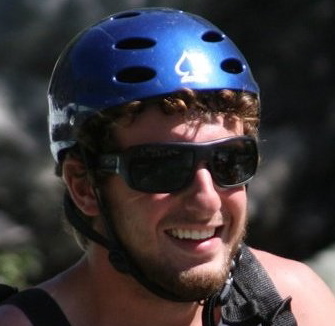
After my mom agreed to let me go, I was on my way to my first multi-day rafting trip at six on the Salmon River in Idaho. For the next few years my dad took me on a number of different rivers but my favorite was the Magpie in Quebec. At 9 I began paddling the Magpie in an inflatable kayak and shot videos to sell to the guests. My favorite part of the trip was starting the fires, my least favorite, editing.
Growing up I knew my dad had been involved in fighting dams in Quebec and Chile but was really too young to understand what was at stake. That perception changed in 2003 when I was eleven and my day told me that a private company, Hydro-Mega, proposed a series of dams on the Magpie which would flood the spectacular lower part of the river, destroying the most beautiful camps and best rapid. I remember when he told me I didn't have much of a reaction. He said, "Cade don't you care?". I mean what could I do? As a kid you feel helpless. My dad told me I could write a letter to the government commission studying the dam's feasibility and testify against the dams at a government hearing being held in a tiny town up near the river.
After traveling for a whole day we arrived at a packed town hall where the hearings were taking place. I remember thinking how strange it was being up there in this tiny village on the St. Lawrence River instead of being in middle school. The power company's engineers testified that the first dam would only be 35 feet high, impacting only a small fraction of the river. They showed slides on a giant screen of the rapid and falls to be flooded and claimed the rapid had never been rafted and never would be because it was too dangerous. After they were done, it was my time to speak. I read my statement which mentioned that I had been running the river since I was 8. That it was my favorite river and that the best rapid was the one they were planning to destroy. I went on to say that my dad would not let me run the rapid until I was 13 and that if they built the dam I would never get to run it. They had set up my video camera to play on the big screen. For the next five minutes I showed raft after raft successfully running the supposedly unrunnable rapid. The video concluded with an interview with some of the guests at the bottom of the rapid saying it was the highlight of their trip. The power company engineers looked pretty embarrassed and the judge running the hearings said "Thank you, Mr. Hertz, for such an informative testimonial."
That next summer Earth River ran a conservation trip on the Magpie to raise awareness to the threats from the dams and I shot video of the trip. Bobby Kennedy along with representatives from environmental groups such as the Canadian Sierra Club and Green Peace came to see and then fight for the protection of the River. After the trip there was a press conference in Montreal. There was a long line of television news cameras set up in the back of a packed room so I set my handheld camcorder next to theirs on the top of a giant tri-pod I had borrowed from my dad's friend Steve Mahan. I climbed up on a chair in order to reach the camera and get a clear view of Mr. Kennedy, my father and the members of the environmental groups sitting at a table in the front. I remember my dad saying that the Magpie was the best multi-day whitewater rafting river east of the Mississippi and that it was one of the top three or four multi-day whitewater rivers in North America. Mr. Kennedy said that, he had rafted all over the globe and between the scenery, rapids and fishing he considered the Magpie to be among the best. He said "damming the Magpie was like finding the Mona Lisa in your attic and selling it at a garage sale." When they were finished speaking the camera guy to my left asked if by chance I had any footage of the actual trip? I said yes and suddenly I was swarmed by news people asking to borrow the footage. They got together and agreed to take me and my footage back to the CBC (Canadian Broadcasting Corporation) studio to interview me and make copies for the other stations for the evening news. That night the interview and the trip footage was aired across Canada on all the major stations.
Driving back toward the border the next day we stopped for ice cream and gas near the New York border and someone came up to the Earth River truck and asked my dad if we were the ones they had seen running the Magpie River on television last night.
In the end, they built the first dam and I never did get to run that final rapid but the other two dams were stopped and although it's hard to float over the buried falls and rapid now, I learned everyone has a voice, if you use it.
Ty-Smith, Personal Reflections
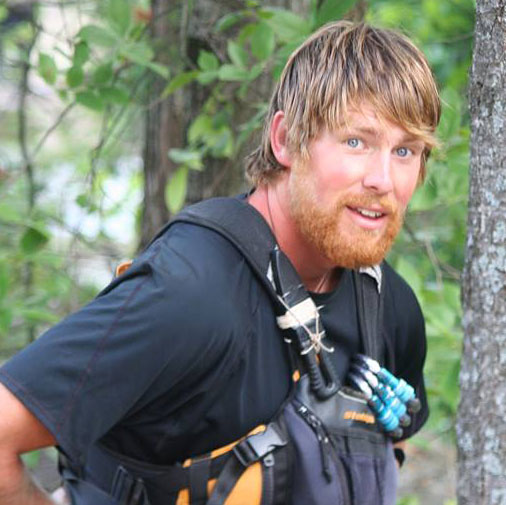
I grew-up in the lakeside village of Shanty Bay, Ontario. At that time it was one of the fastest growing areas in North America. Box stores seemed to be growing out of the ground and with them, a greater detachment from the area's rural roots. One day, while leaving one of the malls, I witnessed my mom's reaction to something that I have never forgotten.
My younger brother and I were in bolster seats in the back of our family minivan. We were stopped at a red light when the driver of the car ahead of us, nonchalantly dropped a chocolate bar wrapper out the window. Without hesitation, my Mom got out of the van and strode up to the culprit's car. She bent over, picked up the wrapper, leaned in toward the driver and said, in a tone that was reserved for serious indiscretions: "I have two young boys in my car that would be happy to pick this up, and you're setting a terrible example for them." At that, she turned on her heels and returned to our car, leaving the driver speechless. At the next light, we ended up beside the car and driver flipped my mom "the bird". I imagine it was his way trying to save face in front of his girlfriend.
Although the littering act was small and regardless of whether my brother or I would have pick up the wrapper, her controlled conviction always stood out in my mind as representative of the clash between environmental indifference and advocacy.
After years of environmental education, I now have the necessary knowledge to stand up against a mining development in a river basin's headwaters or new dam proposal and even to perhaps suggest some viable alternatives. My current goal is to find a career path that balances and merges, my guiding and academic interests. It is a privilege to be a part of Earth River. Their combination of advocacy and ambitious expeditions is a path worth following.
Danny Amos, Reflections Personal
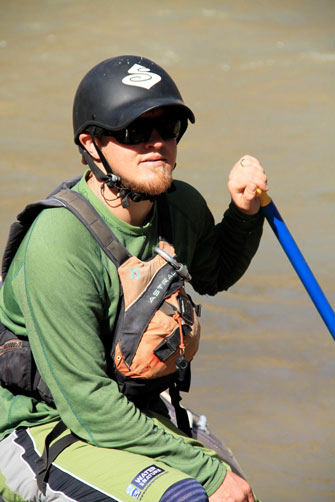
My childhood was as normal as any other middle class American kid. What I didn't realize as a child was how hard my parents secretly worked. They both had entry level blue collar jobs, putting in well over forty hours a week just to keep food on the table and gas in the cars. Don't get me wrong there was always food on the table and mom always had my two brothers and I to hockey or soccer practice on time. As a kid my biggest worry was finishing my homework as quickly as possible so I could ride my bike or build a fort. Life was easy for me, and the sacrifices my parent made to provide that were amazing. It wasn't until I was fourteen when life hit me like a grand piano. It was Valentines Day when I learned to live life to the fullest and to never take it for granted. I watched my dad give my mom a Valentine and a kiss, before we rushed out the door, so dad could get us to school on time. "Bye dad!" I said as I turned my back and walked to class. That was the last time I would say that. My Dad spent his whole life working as hard as he could to provide the best life a kid could ask for and he did a good job at it too.
After my dad was killed in a car accident, I knew I had to live every day as my last. Living life to the fullest was and is my focus ever since that day. In a way I believe that my life has become even better since then, with the realization that life could end as soon as tomorrow.
Every day I wake up excited to live, excited to play and excited to share this beautiful world with others. It didn't take much searching for me to find a way to fulfill my need to live life to the fullest. The hard work and big fun of rafting has made it simple to share my passion for life with others while having as much fun as possible everyday. The river has filled that important void and it is for that reason, my love for life and the river continue to grow. The tragedy of my dads passing has forever shaped my life and my attitude. I will continue to live with a exquisite work ethic but will always play first. Every day is a gift, get up early and stay up late. Thanks dad!
Jiyue Zhang, Personal Reflections
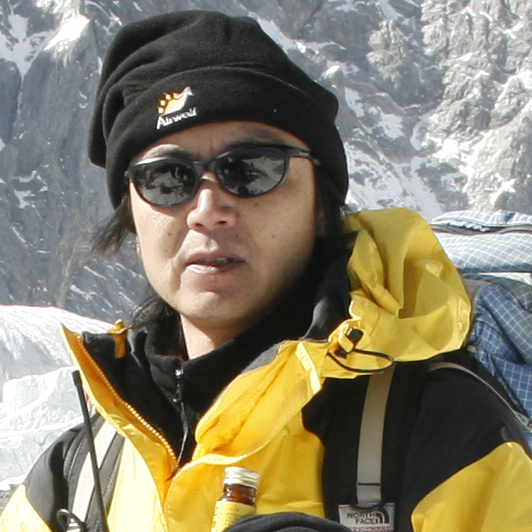
My discovery of rafting was both good fortune and luck. In 1985 China experienced reform and opened the My discovery of rafting was both good fortune and luck. In 1985 China experienced reform and opened the doors to foreign expeditions. A group of Americans wanted to raft the Yangtze River. After three years of negotiations, the team finally received government permission under the condition that it had to be a joint SINO-USA expedition. This was China's most famous river and the government felt the country must be represented.
River rafting was absolutely new to China, so the contract specified that the Americans would train the Chinese team members. By luck I had the privilege of being selected and in 1985 completed an intensive three month raft training program, on 8 rivers in the US. I had found my passion.
1986 was a Chinese rafting "New Year". Besides our SINO-USA Expedition, a number of Chinese teams attempted the river. The race to be first down China's most famous river was a major media event. Regardless of the dangerous rapids and their lack of experience, no one retreated and in the summer of 1986, China's first rafting year, 10 people lost their lives on the Upper Yangtze. I personally had a close call on the final class 6 rapid that ended our expedition, as I was nearly being crushed between a heavy overturned raft and a wall.
Being selected to represent my country on the first rafting trip was luck and surviving that final rapid was luck but the terrifying memory of that final rapid has since been buried beneath the beautiful plateau landscape and the lovely Tibetan people I met. Luck can open your eyes or it can close them, but either way, it changes the way you see the world.
Cade Hertz

Guide/Trip Leader
Guide
Videographer
Cade has been guiding for 18 years (ten on the Futalkeufu) and running expeditions since he was 6. He has worked as a guide on the Middle Fork of the Salmon, Tuolumne, Alsek and Rogue. Internationally he has done expeditions in Patagonia, Peru, Tibet and Quebec. At 9 he began paddling an inflatable kayak down the class 4 Magpie River in Quebec and shot video to sell to the guests. The following year he was on the first exploration of the Lakes of Patagonia in Chile, featured in National Geographic Adventure Magazine. In 2003 he became active in the fight to stop multiple dams slated for the lower Magpie River in Quebec, testifying at government hearings and showing a video he shot that contradicted the developers claims that the River’s most impressive and soon to be flooded rapid was not runnable. His Magpie footage of a conservation expediton with Robert Kennedy Jr. was shown across Canada on CBC Television. In 2010 he shot video on the first raft and commercial descent of Peru’s Yavero River. In 2014, he coordinated the safety for a first descent on the Rio Ventana. His video work can be seen on the Earth River site. Cade is an avid kayaker and has run multiple rivers throughout the U.S. and Chile.
Ty-Smith
 Guide/Trip leader
Guide/Trip leader
Ty is from Ontario, Canada and has been guiding for 14 years. He has managed a large rafting company on the Ottawa River and is been a guide instructor on the W.I.L.D guide school; where participants run rivers from Canada to Costa Rica over a three month period. For four years Ty has guided for Earth River on the Magpie and for three on the Futaleufu. Ty has a masters degree in Environmental Science and did his thesis on the disastrous impact a breach in a British Columbia mine's tailing pond would have on the down stream watershed. Ironically, the following year, in Canada's worst environmental mining disaster, that very same British Columbian mine had a dam failure sending millions of metric tons of poisonous waste water into the downstream waterway. Ty has led a number of Inui First Nation trips down the Magpie River in Quebec, in order to build an awareness within the native community to what is at stake with the proposed dams. This awareness within the native community is paramount if the river is to be protected. Ty plays the mandolin and guitar and often sings around the campfire.
Shaohong
 Expedition leader
Expedition leader
River & Mountain Guide
In his twenties Shaohong was China's premier decathlete and honored with the prestigious "Chinese National Sportsman Award". When he retired from track, he forged a new career in adventure travel becoming an expert mountaineering, trekking and river guide.
Shaohong has taken part in numerous mountaineering first ascents in eastern Tibet. He participated in the 2002 joint China-Japan expedition that reached the summit of ChoOyu, the world's fifth highest mountain. In 2005 he summited Everest as part of a Chinese team organized to formally measure the height of the mountain. He was awarded China's highest sporting honour, the Sport's Medal of Honour, for his contribution to the expedition's success.
Shaohong has participated in many Earth River rafting tours on the Great Bend of the Yangtze in Yunnan and the Upper Yangtze river in Qinghai provinces. He has gained a great reputation for his Chinese cooking on the rafting expeditions.
Shaohong is also a professional photographer, and photographs have been published in China National Geographic and Japanese and Hong Kong outdoor adventure and travel magazines. In 2008 he was the official photographer for the Chinese Mountaineering Team's ascent of Mount Everest with the Olympic Torch. His photographs were used in the official commemorative album, "Olympic Shining Flame on Mount Everest."
Jiyue Zhang
 Chinese Partner/Guide
Chinese Partner/Guide
Jiyue is one of the grandfathers of adventure travel in China. Upon graduation from Sichuan Sports Institute in 1982, where he was a highly ranked 400 meter runner, Jiyue began working for China Mountaineering Association as a climbing guide and liaison working with international climbers. In 1985 the Chinese government sent him to the U.S. for whitewater training where he ran eight different rivers. The following year, he participated in the joint Sino-USA, first descent of the Yangtze River which completed 2000 kilometers of the previously unrun river. ABC's American Sportsman,featured the expedition in a two-part, 90-minute special titled, "Challenging China's Yangtze".
In 1993, under China's Open Door policy, Jiyue founded, Sichuan Earth Expeditions, one of the first private adventure companies in China. The company organized and led numerous first ascents throughout China and Tibet including the North Face of Gonga Mountain with one America's of America's most distinguished mountain climbers, Fred Becky. Sichuan Earth Expeditions also participated in the 2005 Chinese climb of the Mt. Everest and the 2008 World Olympic torch relay to the top of Everest.
As Earth River's China partner, Jiyue helped organize and run the first descent of the Shangri-la's Shuilo and Po Tsangpo Rivers in Tibet, as well as early commercial descents trips down the Great Bend and Upper Yangtze, He has been featured in Outside, National Geographic (yellow), National Geographic Adventure, Men's Journal and on National Geographic Television, China's Outdoor Exploration and Japanese Outdoor Magazine.
Eric Hertz
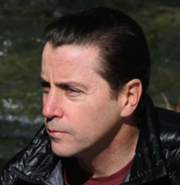
"Eric is one of the best in the business - Obsessed with safety."
National Geographic (yellow) Magazine
I met Eric in 1980, when he almost single-handedly stopped the James Bay II Hydro-electric Project, which would have destroyed eleven major rivers in northern Quebec. I worked with him to save Headwall Canyon in British Columbia and Quebec's Magpie.
Robert Kennedy Jr.
Eric’s guiding began at 16 on a cross country bicycle trip where he met a guide who invited him to row a baggage boat on Oregon's Rogue River. Throughout his high school and college summers he guided on the Tuolumne River in California where he was one of the first to run a commercial paddle boat. After college, he spent his summers guiding on the Colorado River in the Grand Canyon and was a playwright the rest of the year. His plays won a number of awards including a National Endowment for the Arts fellowship. His play “Between Rails” was produced off-broadway. (New York Times review). During this time he also co-founded the Rondout-Esopus Land Conservancy in the Catskill and Sharwangunk ("gunks") Mountains of the Hudson Valley in New York which has protected over 3,500 acres.
In the late nineteen eighties, Eric gave up playwriting to start Earth River. The company was founded on a number of core principles; exploring and finding the most amazing trips, running the finest, safest trips possible and fighting to preserve important river resources. Over the past 23 years, Eric has organized and led dozens of conservation awareness trips taking policy makers and media down threatened rivers. His efforts focussed on stopping the James Bay Hydro-electric Project in Quebec and dams on Chile’s Bio Bio and Futaleufu rivers and Quebec’s Magpie. Eric's other conservation efforts helped bring awareness to the preservation of watersheds like British Columbia’s, Yosemite like, Headwall Canyon and New Foundland’s Main River, which were both threatened by clear cut logging. Using his land trust experience, he co-founded the Earth River Land Trust on the Futaleufu which to date has protected many kilometers of the river’s most dramatic shoreline.
Eric has been a pioneer in river rafting safety. He introduced the industry to foot cups to keep paddlers in the rafts and was among the first to teach clients active "self rescue" swimming techniques rather than passively floating on their backs. He was the first outfitter to offer a raft training day before running class 5 and introduced the industry to the use of caterafts "safety cats" as a rescue craft on large volume rivers like the futaleufu. He was the among the first to introduce oar-paddle hybrid rafts and double guided boats on challenging rivers.
Eric has organized and led first descents around the world and has been featured in American Airlines Magazine, Outside, National Geographic (yellow), National Geographic Adventure, The New York Times, Conde Naste Traveler and Men's Journal and on National Geographic Television, P.B.S., ESPN, TBS and Nicolodian. He pioneered and opened commercial rafting and multi-sport trips on a number of spectacular destinations including; Patagonia Chile's Futaleufu, China's Great Bend of the Yangtze, Quebec's Magpie, Peru's Colca Canyon, Tibet's Upper Yangtze, British Columbia's Headwall Canyon and the Yukon Territory's Primrose. Eric was the trip leader and captained the lead boat on a number of notable first raft descents including; the Futaleufu, Magpie, Headwall Canyon and Tibet's Schulo Ho which was featured in National Geograpic (yellow) Magazine. He was inducted into the New York Explorers Club in 2015. His two sons, Cade and Teal, guide for Earth River.
Trip Dates and Prices
Safety
Earth River History
EARTH RIVER ETHIC
Copyright © 2020 Earth River Expeditions


